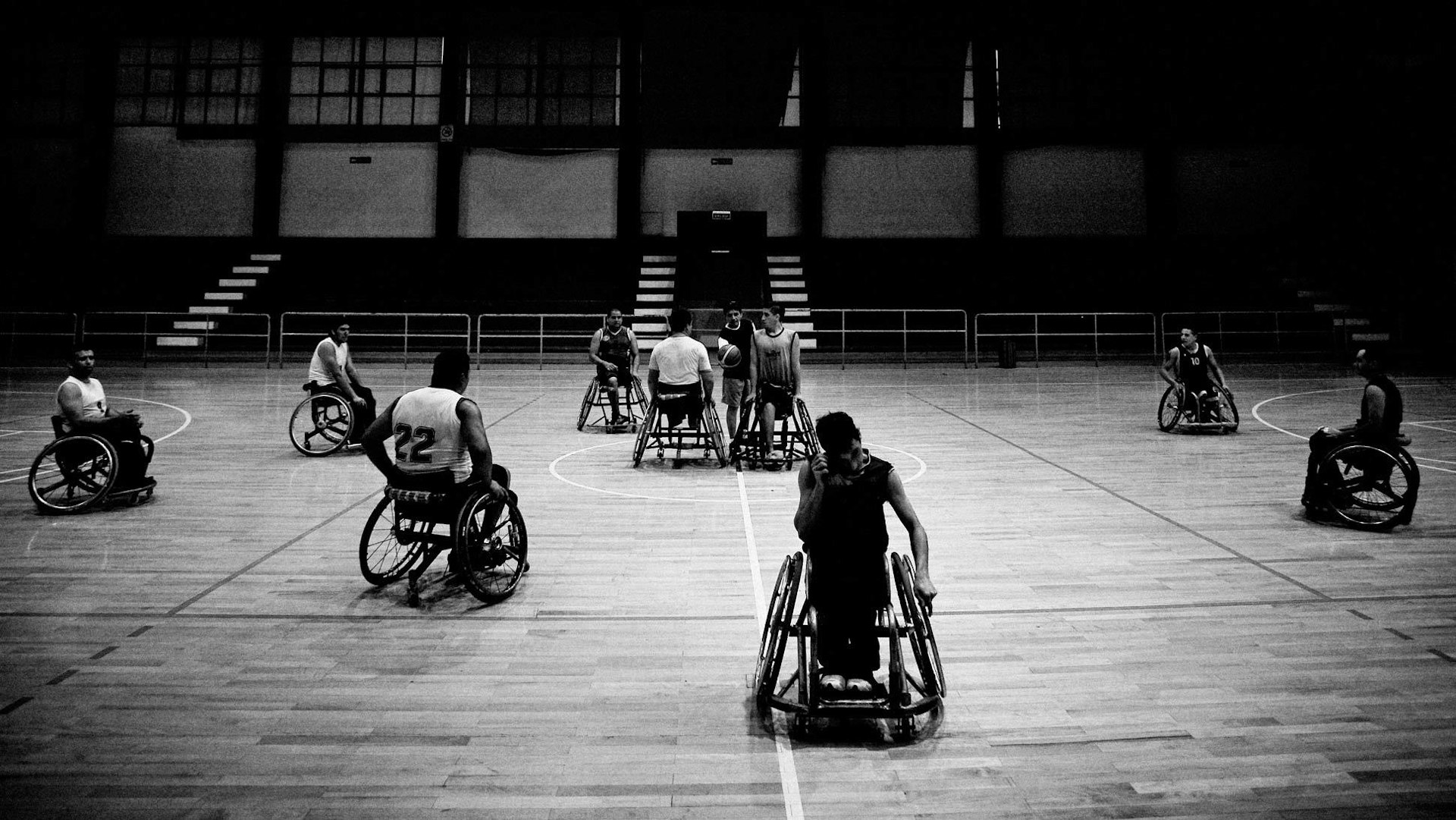
Wheelchair Basketball
- Text by Javier Heinzmann
- Photography by Javier Heinzmann
Gustavo Villafañe is pushing the full weight of his body up and down on one arm. Sweat drips from his forehead. His veins bulge and pulse. He pauses briefly – face inches from the floor – then channels everything he’s got into a long, final push, before flinging his bodyweight back into his wheelchair so he’s sitting bolt upright, eyes fixed ahead. When Gustavo was nine, he was hit by a train. The accident cost him both legs and an arm. Now Gustavo is a champion athlete and one of the best wheelchair basketball players in the world.
Gustavo and his Argentine teammates are training hard. This November, they’ll head to Guadalajara to compete in the 2011 Parapan American Games and, if they’re successful, they’ll venture even further – all the way to London, in fact, for the 2012 Paralympic Games.
The roots of this adapted sport can be traced back to the small English parish of Stoke Mandeville where, in 1944, German neurologist Ludwig Guttmann was heading up the rehabilitation program at the National Spinal Injuries Centre. Sport, thought Ludwig, could be a method of therapy – a way to rebuild strength and self-respect. So he set about adapting different disciplines for wheelchair users, igniting a string of annual events that, in 1960, morphed into the first-ever Paralympic Games.
Across the Atlantic, meanwhile, disabled American World War II veterans were busy forging a wheelchair basketball scene of their own. When a polio epidemic swept across South America in the 1950s, news of this emerging sport reached many of those left disabled by the disease, and pockets of keen competitors began to pop up across the continent. Soon, national rehabilitation services everywhere got behind the sport and today the International Wheelchair Basketball Federation (IWBF) helps seventy-six national teams compete across the globe.
The sport aims to be as democratic as possible. A rigorous scoring system ensures that athletes with severe disabilities, including paraplegics, can participate on equal terms. Each player gets a score, ranging from one for the most affected players, up to 4.5 for those with a lesser disability. Each team must have 14 points on the court. They use the same ball as in Olympic basketball and the hoop is at the same height.
The sport itself may be inclusive and fair, but for Argentina’s committed crew of athletes, obstacles abound. Coach Domingo Patrone explains: “We are below the level of other countries mainly due to organisational [problems], including lack of sponsors and economic reasons in general.”
Each member of the national team receives a grant, issued by FADESIR (Argentina Wheelchair Sport Federation), which helps offset some travel expenses. But commitment to the sport still comes at a price. “In Argentina, a racing chair costs about 2,500 US dollars. We find it difficult to reach high-performance competitive seats,” says teammate and former football player Hernan Fonseca.
Needless to say, Canada, Australia, Great Britain and the United States usually fight it out for top spot, with the US winning seven out of twelve world championships. But those numbers say nothing about the will to win. If the way in which Gustavo and his teammates are charging around this court is anything to go by, nothing – and nobody – can stand in their way.
